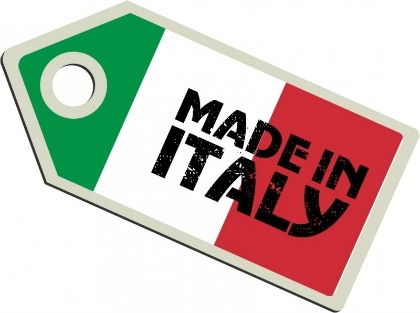
Most of the luxury produced in Italy or in any case by Italian companies is also growing in 2022
At the 27th Pambianco Fashion Summit, organized with Pwc and supported by Grazia, the role of Italian companies in the new world fashion system was thoroughly analyzed, studying future prospects and challenges. From the conclusions of the insiders it is clear that Italy represents an essential pole for all the production and manufacturing of luxury fashion all over the world and, although the economic growth of companies in the sector is not comparable to that of foreign companies, mainly due to the small size of Italian factories, the luxury sector enjoys excellent health and Made In Italy is still considered a point of reference.
The study carried out by Pambianco analysts, during the summit, took into consideration brands still owned by Italy, such as, for example, Prada, Armani, Brunello Cucinelli, Dolce&Gabbana, Otb, Moncler, Zegna and Ferragamo and those, foreign or not more Italian but which produce in Italy, such as Burberry, Chanel, Hermès, Kering, Lvmh, Valentino and Richemont recording total revenues of 141 billion euros, with a significant increase compared to the 100 billion of the previous year but also compared to the data relating to the pre-Covid period, much more indicative for comparison purposes. In addition to the proceeds, the profitability of the brands taken into consideration also seems to be continuously growing in 2022 compared to the less comforting data of 2021.
The companies still Italian-owned, however, occupy a relatively low percentage in the panorama of growing brands but manage to hold their own in terms of revenue margins, keeping the gap still wide but with good potential for improvement. The growth of international brands stood at +6.6% between 2019 and 2021, while that of completely Italian companies was 0.9% more than in previous years, thus remaining still too low and worthy of attention from the professionals.
However, the more interesting data is that relating to the individual sectors of luxury and fashion such as clothing, footwear and leather goods, which together represent 57% of the total turnover: in Italy, according to the analysis, it develops the production of 78% of all products linked to the just mentioned sectors, with an economic impact of 17 billion euros, divided between manufacturing and the cost of raw materials
The strength of the Italian production system, in the luxury sector, is therefore represented above all by the producers and by the know-how which has always been recognized as the most complete compared to foreign knowledge. The large number of small companies that make up the Italian production chain is an integral part of a system made up of great craftsmanship and the search for excellent raw materials as well as an indisputable taste now celebrated all over the world. This production network must be supported by entrepreneurial choices which do not indiscriminately isolate the capabilities of Italian manufacturing but which, rather, make it even more European, so as to make the most of the enormous economic revenues generated by the sector which, now, mainly benefits foreign and better industrialized companies.
In addition to Italy, the other nation intent on strongly defending its production capacity is France and it is precisely with the transalpine companies that Italy will have to consolidate a collaboration necessary to make the 2 fashion powers strong, also from economic and entrepreneurial point of view. Creativity in the luxury sector and above all in the fashion sector is an extremely precious asset and is still recognized almost exclusively to Italy and France and this power must be made even more profitable for all the companies involved.



 Subscribe
Subscribe